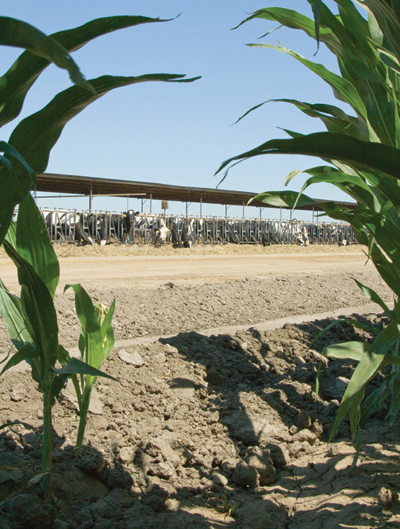 It may be an essential nutrient for growing crops, but phosphorus (P) can wreak havoc when it flows to noncropping areas like streams, rivers, and lakes. Once in waterways, it can lead to algal blooms. Fertilizers applied to cropland are not the only cause, but are one possibility of many, says Tom Bruulsema with the International Plant Nutrition Institute (IPNI).
It may be an essential nutrient for growing crops, but phosphorus (P) can wreak havoc when it flows to noncropping areas like streams, rivers, and lakes. Once in waterways, it can lead to algal blooms. Fertilizers applied to cropland are not the only cause, but are one possibility of many, says Tom Bruulsema with the International Plant Nutrition Institute (IPNI). While much progress has been made at reducing phosphorus runoff, researchers from Heidelberg University completed a study that found P levels have been trending upwards over the past 15 years in the Lake Erie watershed after showing downward trends in the previous 20 years. (Lake Erie borders Ohio, Pennsylvania, and New York on the southern shore and Canada's Ontario province to the north.)
In order make the most effective use of phosphorus; IPNI's Bruulsema encourages farmers to use 4R Nutrient Stewardship. This plan ensures the right source of P is applied at the right rates, right time, and right place. The "right place" likely holds the greatest opportunity for improvement, but the other three need to be in tune as well, says Bruulsema.
Source: Plants need P dissolved in water. If we had a source that would dissolve only in the water taken up by the plant, but not in the water leaving the field, it would be the solution. But we don't. We do need sources that can be conveniently placed in the soil, says Bruulsema.
Rate: Fertilizing to recommendations based on soil and plant analysis is important. Crop nutrient balances show that current typical rates applied don't exceed removals, and reduction opportunity is small.
Time: It is important to apply when risk of runoff is low, says Bruulsema. Research shows that, when P fertilizer is left on the soil surface, any rainfall-induced runoff within the next several weeks will contain much elevated levels of soluble P. While such runoff wouldn't carry away more than a small percentage of the P applied, it doesn't take much P loss to start an algal bloom.
Place: There are five steps to determine the right place to put P:
1. Where the soil doesn't have enough.
2. In zones where P is needed within fields.
3. Close to the roots of plants that need it.
4. In a cropping system geared to higher yields.
5. Into a soil that can take in and hold as much water as possible.
There are wrong places to put P, too, says Bruulsema. To minimize impacts on water quality, growers need to avoid putting soluble forms of P on the surface of runoff-susceptible soils, especially during the critical periods – late fall and early spring in most areas.








